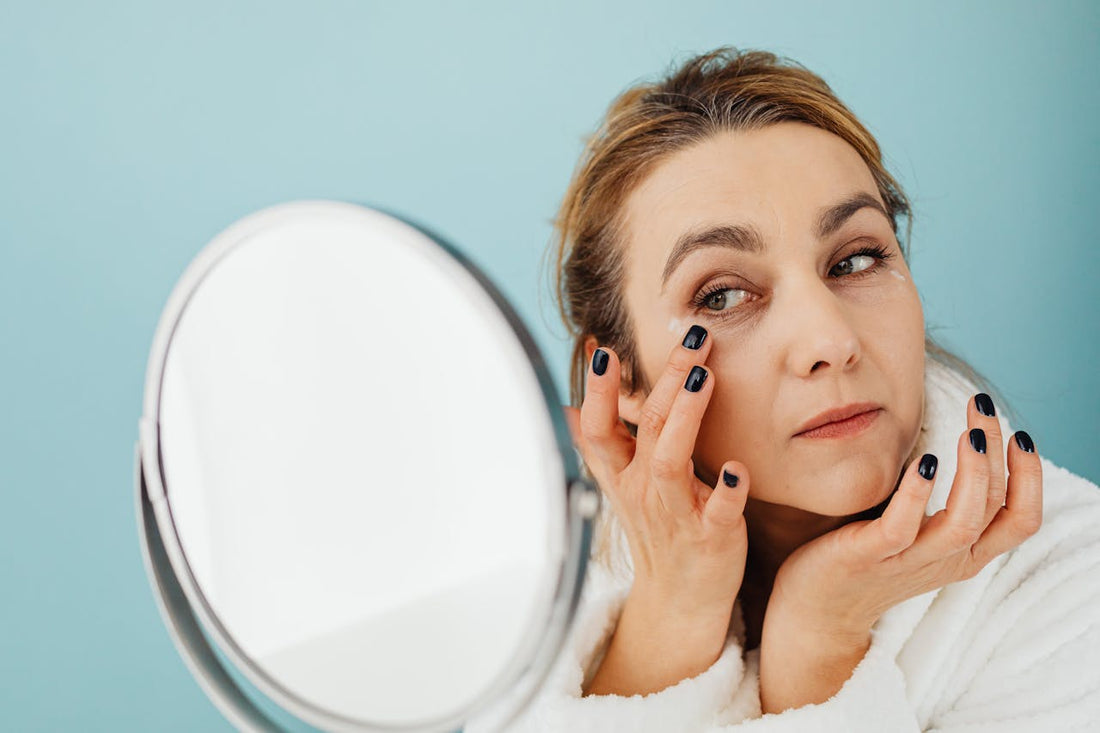
Why Tretinoin Is Not Working?
Share
Why Tretinoin May Not Be Working for You
Tretinoin, a widely trusted treatment for acne, fine lines, and uneven skin tone, has become a go-to product for people seeking healthier, more youthful-looking skin. However, many users sometimes feel frustrated when it seems like tretinoin isn’t delivering the expected results. If you’re among those wondering why tretinoin is not working for you, this article will explore the potential reasons and provide tips to help you get the most out of your skincare routine.
Understanding How It Works
It works by increasing cell turnover, which means it helps your skin shed dead cells more effectively and encourages the growth of new, healthy cells. This process can help reduce acne, improve the appearance of wrinkles, and fade hyperpigmentation over time.
However, it’s important to note that tretinoin is not an overnight solution. Consistent use over weeks—and sometimes months—is necessary to see significant results. If you’re not seeing improvements, it doesn’t necessarily mean tretinoin isn’t effective. Let’s explore some common reasons why you might not be experiencing the benefits:
1. Expecting Instant Results
One of the most common misconceptions about tretinoin is that it delivers immediate improvements. In reality, tretinoin typically takes 6 to 12 weeks to show noticeable results, and some changes, such as reduced fine lines, may take even longer.
During the initial weeks, it’s also normal to experience what’s known as a “purging phase,” where your skin may look worse before it gets better. This is due to the increased cell turnover, which can bring underlying issues to the surface. Patience and consistency are key.
2. Incorrect Application
How you apply tretinoin can greatly affect its efficacy. Common mistakes include:
- Applying too much product: A pea-sized amount is usually sufficient for your entire face
- Skipping moisturizer: Tretinoin can be drying, so pairing it with a good moisturizer can help your skin tolerate the treatment better.
- Not waiting after cleansing: Applying tretinoin immediately after washing your face can increase irritation. It’s best to wait 15-20 minutes to let your skin dry before application.
3. Inconsistent Use
For tretinoin to work effectively, consistency is crucial. Skipping days or stopping treatment due to irritation can hinder progress. If irritation is an issue, consider using it every other night or mixing it with your moisturizer until your skin adjusts.
4. Using the Wrong Strength
Tretinoin comes in various powers, ranging from 0.025% to 0.1%. Starting with a high concentration may cause excessive irritation, while a lower strength might not be potent enough for certain skin concerns. Consult a dermatologist to determine the right concentration for your skin type and goals.
5. External Factors Affecting Results
External factors such as lifestyle, skincare routine, and environmental conditions can also influence how well tretinoin works. These include:
- Sun exposure: Tretinoin makes your skin more sensitive to UV rays, so not wearing sunscreen can lead to irritation and even counteract its benefits.
- Using incompatible products: Harsh exfoliants or products with alcohol can irritate your skin and reduce tretinoin’s effectiveness.
- Unhealthy habits: Smoking, poor diet, and lack of sleep can slow down your skin’s ability to repair itself, affecting tretinoin’s results.
6. Underlying Skin Conditions
Sometimes, tretinoin might not work as expected because the skin concern you’re treating requires a different approach. For example, hormonal acne may need additional treatments like oral medications or hormonal therapy. Similarly, certain types of pigmentation, like melasma, may respond better to a combination of tretinoin and other ingredients like hydroquinone.
Tips for Maximizing Tretinoin’s Effectiveness
- Stick to a simple skincare routine: Avoid overloading your skin with too many active ingredients. Gentle cleansers, hydrating moisturizers, and daily sunscreen are all you need.
- Introduce tretinoin gradually: Start by using it 2-3 times a week and gradually increase the frequency as your skin builds tolerance.
- Consult a dermatologist: If you’re not seeing results after 3-6 months of consistent use, a dermatologist can evaluate your routine and make adjustments.
- Be patient: Remember that tretinoin is a long-term solution. Improvements may take longer to show up from weeks to months.
FAQs About Tretinoin
1. Why does my skin look worse after starting tretinoin?
This is likely due to the purging phase, where increased cell turnover brings underlying acne to the surface. This phase is temporary and usually ends within a few weeks.
2. Can I use tretinoin every day?
While some people can tolerate daily use, it’s best to start slowly to minimize irritation. Gradually increase frequency as your skin adapts.
3. How long does it take for tretinoin to show results?
You may notice improvements in acne and skin texture within 6-12 weeks. For concerns like fine lines and pigmentation, results may take several months.
4. Can I use tretinoin with other active ingredients?
Yes, but be cautious. Ingredients like benzoyl peroxide, salicylic acid, and glycolic acid can increase irritation when used with tretinoin. Always introduce new products slowly and monitor your skin’s response.
5. What should I do if tretinoin causes excessive dryness or peeling?
Use a hydrating moisturizer and consider applying it before tretinoin to reduce irritation. If dryness persists, reduce the frequency of use until your skin adjusts.
6. Is tretinoin safe for sensitive skin?
Yes, but it requires a cautious approach. Start with a lower concentration and use it less frequently until your skin builds tolerance.
Final Thoughts
Tretinoin is a powerful and proven treatment for various skin concerns, but it requires patience, consistency, and the right approach to deliver optimal results. By understanding how tretinoin works and addressing potential issues in your routine, you can maximize its benefits and achieve healthier, glowing skin over time. If you’re still struggling despite following these tips, don’t hesitate to consult a dermatologist for personalized advice.
